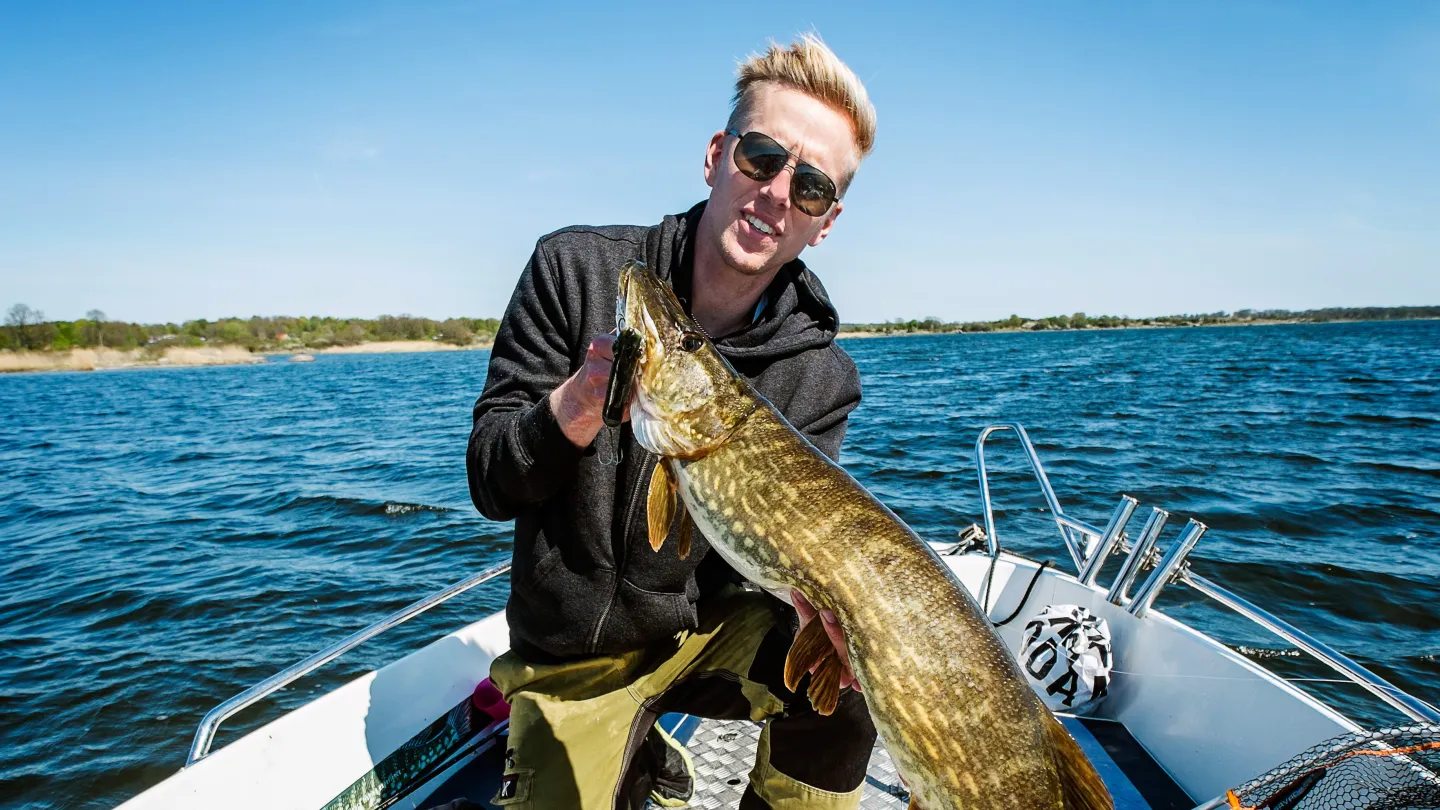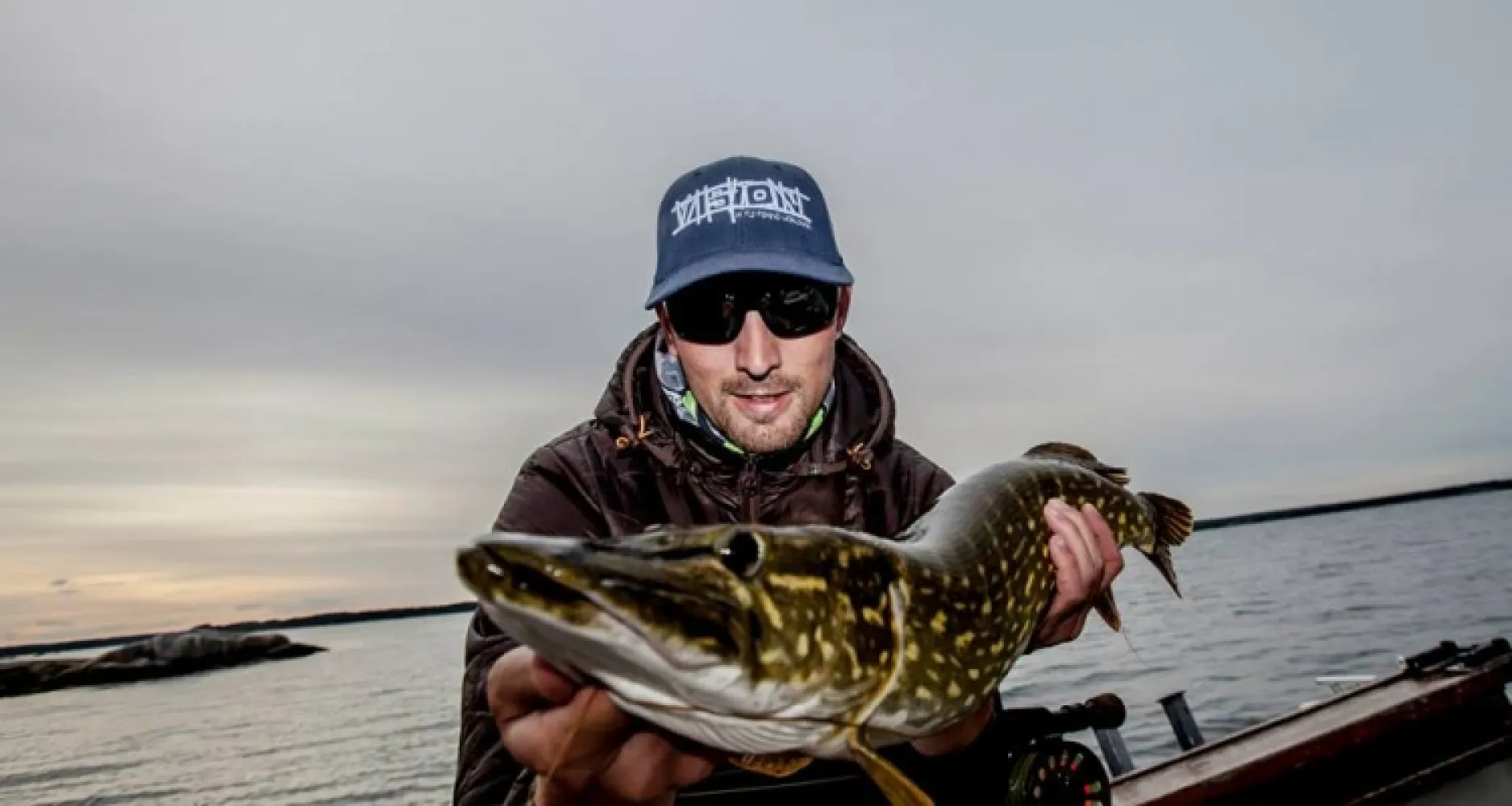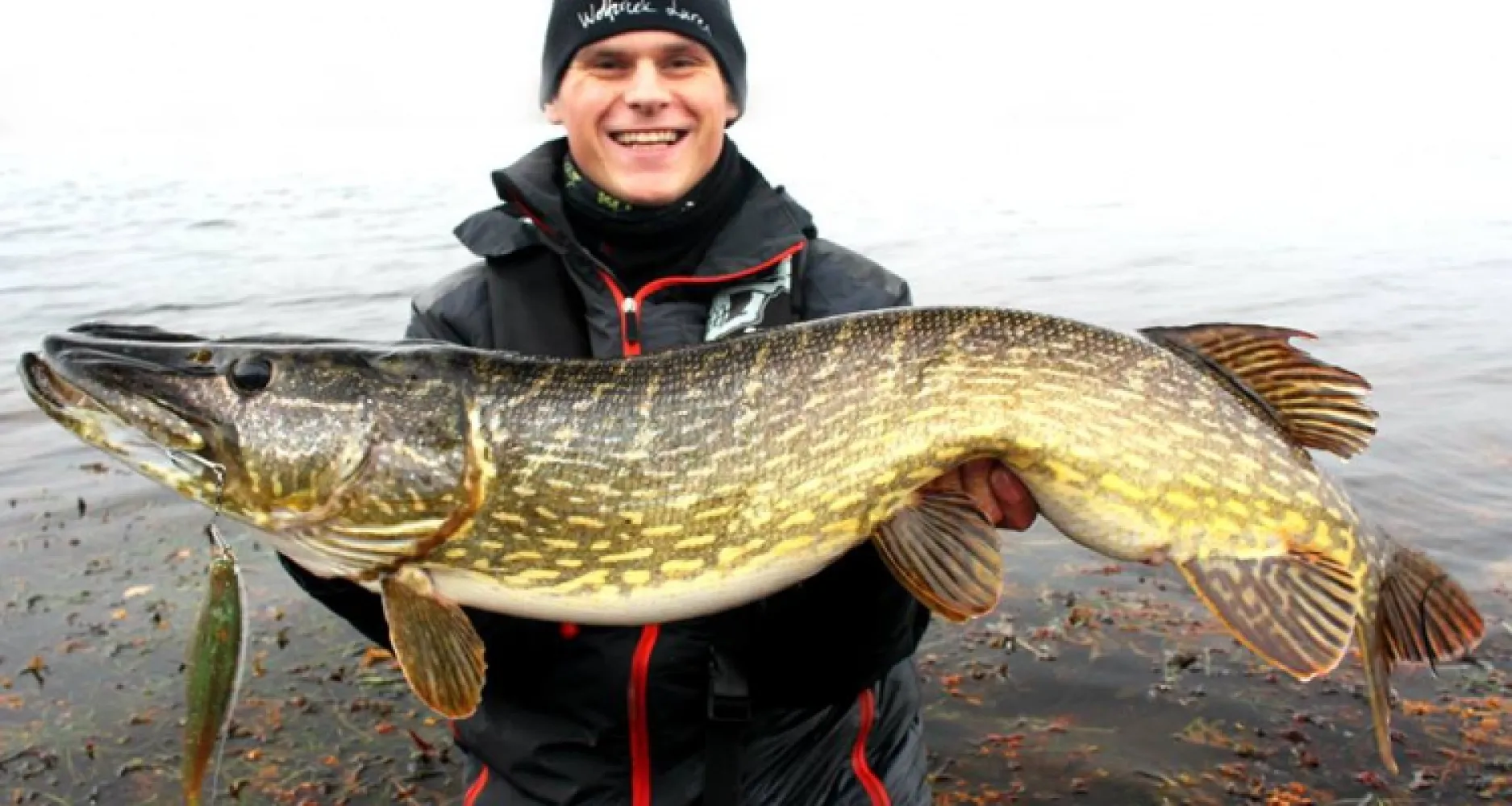The pike is a voracious predator that eats most things coming its way.

Pike fishing
It eats all kinds of fish, even smaller pikes. It happens that pikes eat small seabird chicks, frogs, crayfish and swimming voles. It is available in both fresh and brackish water, but can not handle too high salinity. The water in the Karlskrona archipelago is brackish and the pike thrives excellent. The stock is very good, much depending on that net fishing has decreased and that anglers mostly uses catch and release fishing.
The pike can be found in the proximity of vegetation, deep drop-offs or other places where it can take shelter, hide and instantly push forward and attack anything edible. Where there are smaller fish, there are usually predatory fish such as pike, because they want to be close to the food. During late autumn, winter and early spring, you will find the pike collected in Karlskrona's shallow clay coves. The water is then often crystal clear and the fishing depth is often below two meters, which places great demands on you to behave quietly and covertly. Wading, kayaking or fishing from a drifting boat along the reeds is very effective. Then you avoid scaring the pike with unnecessary engine noise.
Please use a sea anchor to reduce the speed of your operation. During the winter, the pike is often sheltered, unlike during the "hot water season" when you always have to fish where the wind is. Now you should fish varied usually slowly with long stops, but increase the speed sometimes. Large jerkbaits, large surface jigs and not least fly fishing are now very effective.
After spawning, the pike begin to leave the bays and often stand around rocky areas and small skerries just outside the shallow bays where they have just spilled. Fish where you will find rock and seaweed at depths from three meters and less. Now it is important to fish where the wind is. A stable wind for the warm surface water in front of it and pushes it into the bays where the wind is blowing. Small fish congregate there, even the oxygen content is higher. These factors mean that the pike gather in these places for hunting and that your fishing opportunities increase drastically if you fish right there.

During late spring, summer and early autumn, you will find pike in between and the outer archipelago around detached grounds, islands and along the deep edge of larger islands. Now the larger pike are a little deeper where the water is cooler and more pleasant for them. This means that you should try to fish a little deeper along the edges and around islands, skerries and exposed grounds. However, you can get many smaller pike at depths below three meters at these locations, but the larger ones tend to stand deeper. Good baits are now jigs, spoon pulls, pike spinners and sinking jerkbaits and wobblers. It is very important to fish in the windswept areas among rocks and seaweed. When it is really bright and warm, it can be difficult to get the pike to chop during the day. Then you can test late evenings or early mornings.
Some pike tips:
Always use tafs when fishing for pike. The sharp teeth otherwise bite easily off the rope. Also have a good pair of pliers or peang with which you can loosen the hooks. If you use a net, it should be equipped with a rubber net with knots. Do not use lip grips as these often damage the pike. Huggkrok is of course banned among real anglers. Feel free to learn to land the pike with gill grips, which is the most gentle way. Do not exhaust the pike unnecessarily, but land it as quickly as possible. Bring a fishing bag in which you immediately put the pike if it is large and you intend to photograph, measure and weigh it. Allow the pike to recover in the bag below the water surface while preparing for photography and weighing. Doing this will give you better images, measurement and weighing will be quick and efficient. The pike will then be released more alert and healthier than if you leave it above the surface for an unnecessarily long time due to poor handling. Feel free to use a hook mat when measuring the fish. The most important safety details are life jackets, polarized sunglasses (you see the fish better in the water and protect your eyes from hooks) and a powerful cutter. Should the accident occur and you hook yourself, a powerful cutting pliers must be available so that you can quickly cut the hook off the pike. If the pike is badly hooked, a good pike fisherman would rather cut the hook than dig and tear in the pike's jaw for a long time, which in most cases means death for the pike. If you then have barb-free hooks, you are a true angler!
Text: Gunnar Ahlström

